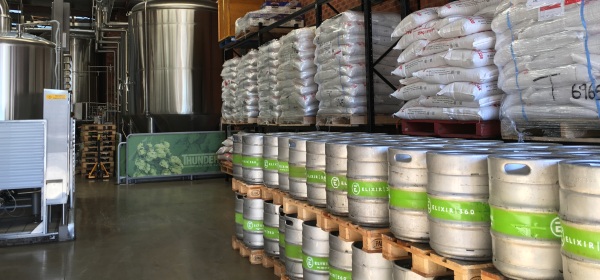Since 3500BC, beer has been known as the ‘divine drink’. It is one of the world’s oldest and most popular drinks and for good reason – it’s darn tasty and quite possibly good for you too! Learning to love beer really begins with learning how it’s made.
Beer is made with four simple ingredients: grain, water, hops and yeast. The recipe for beer is a testament to its simplicity. Here’s a brief breakdown of the beer-making process.

Ingredients
Grain
It all begins with the grain, usually barley. It’s mixed with water and allowed to germinate in a process called ‘malting’, which transforms the grain into malt. The malt is responsible for the formation of alcohol and is also from where a beer’s sweetness is derived. All good beer has no added sugar – all that should come from the malt.
Water
Water makes up 90 per cent of a finished brew and the brewer’s choice of water is a very important factor in how a beer tastes. If you sample a South Australian beer it will taste slightly different to a Tasmanian beer – that’s because the water from each state is different.
Hops
Hops are technically a flower that were originally used as a preservative. However, these days, hops are used to enhance the flavour of a beer, including its aroma and bitterness.
Yeast
Yeast is the magical ingredient in beer, and although it doesn’t add much flavour, it is responsible for extracting the sugars from the malt, turning them into alcohol.

How is it made?
After careful selection of ingredients, the beer-making process starts with the grain. When combined with cold water, the grain germinates. The water is then heated to halt the germination process and once that happens the malt is laid out and dried on a huge, heated wooden floor. Lighter malts, which are found in pale ales and lighter-coloured lagers are kiln-dried for shorter periods compared to darker malts, which are found in brown ales and other dark beers.
Once the malt is dried it is run through a malt mill, where it is cracked to help release the carbohydrates and sugars. This is then mixed with hot water that converts the starch into sugar. This process is known as ‘mashing’ and the result is a thick, sticky, sugar-rich mixture called the ‘wort’.
The wort is then poured into a kettle for boiling. This is when the first (and sometimes only) batch of hops are added, and the mixture is boiled until all those lovely beer flavours and aromas are released. The mixture is then filtered and cooled with a cold-water heat exchange. Hops can also be added later to increase a beer’s flavour.
After these three stages, the beer is poured into a fermentation tank. Here, yeast is added to the mixture, which converts the sugars into alcohol and carbon dioxide. If yeast is used at cooler temperatures, it is called bottom fermenting, which is typically used for lagers, whereas, at warmer temperatures it is known as top fermenting, which is typically used for ales. Once the yeast has extracted enough alcohol from the sugars it is moved to a resting tank.
This is where the beer undergoes a process called ‘ageing’ or ‘conditioning’, which can take anywhere between a couple of weeks to several years. At this stage, hops can be added to the mixture for extra flavour, or it can undergo a secondary fermentation or be filtered for impurities. The resting temperature of the mixture depends on the type of beer being brewed. For example, a lager will be stored at lower temperatures than an ale.
Once the beer is ready for drinking it is put into bottles, cans or kegs and sent out into the waiting arms of thirsty beer-drinkers the world over.
So there you have it. The recipe for beer may be simple, but the process is quite involved. Not all beers are created equal – in fact – nothing could be further from this truth. From the ingredients chosen at the initial stages to the way a beer is bottled or kegged and every stage in between makes for the multitude of intricate, complex tastes of beer. We are lucky to be one of the greatest beer producers in the world, and our very own burgeoning beer industry gives us no excuse to not ‘drink Australian’. So go on, do your part and buy Aussie beer.
Related articles:
Nine reasons you should drink beer
Drink less and still have fun
Cold beer, warm nights

